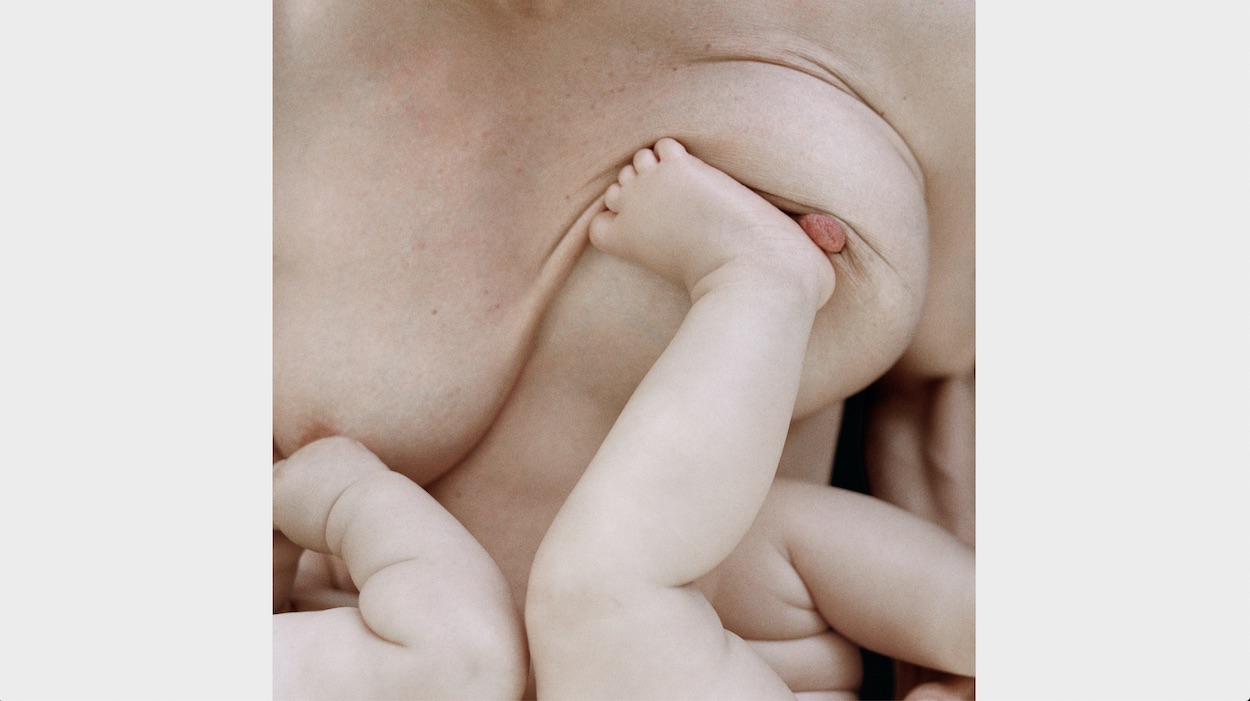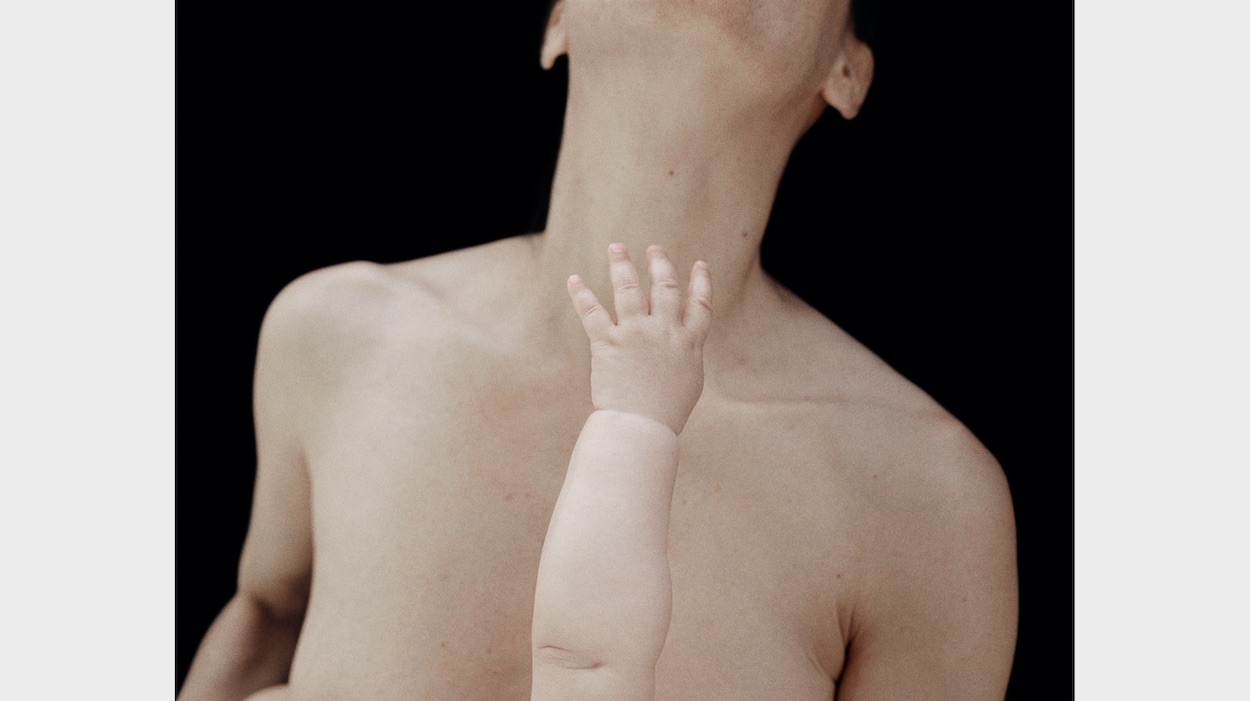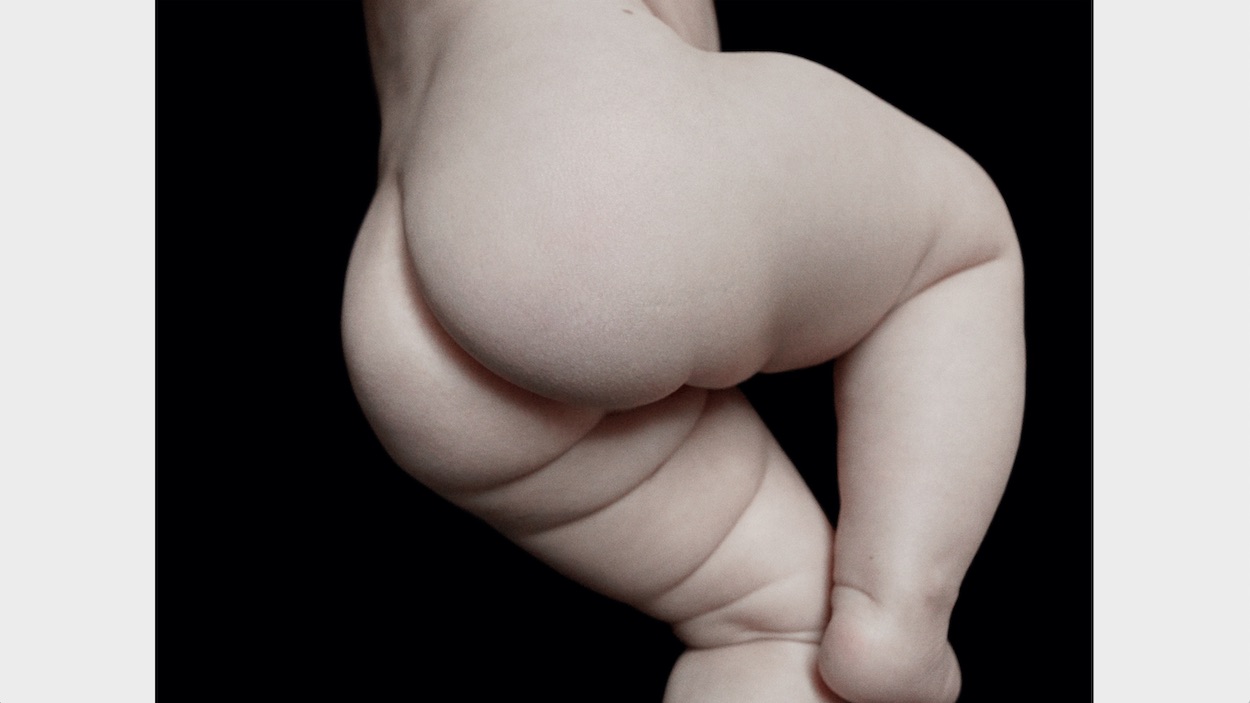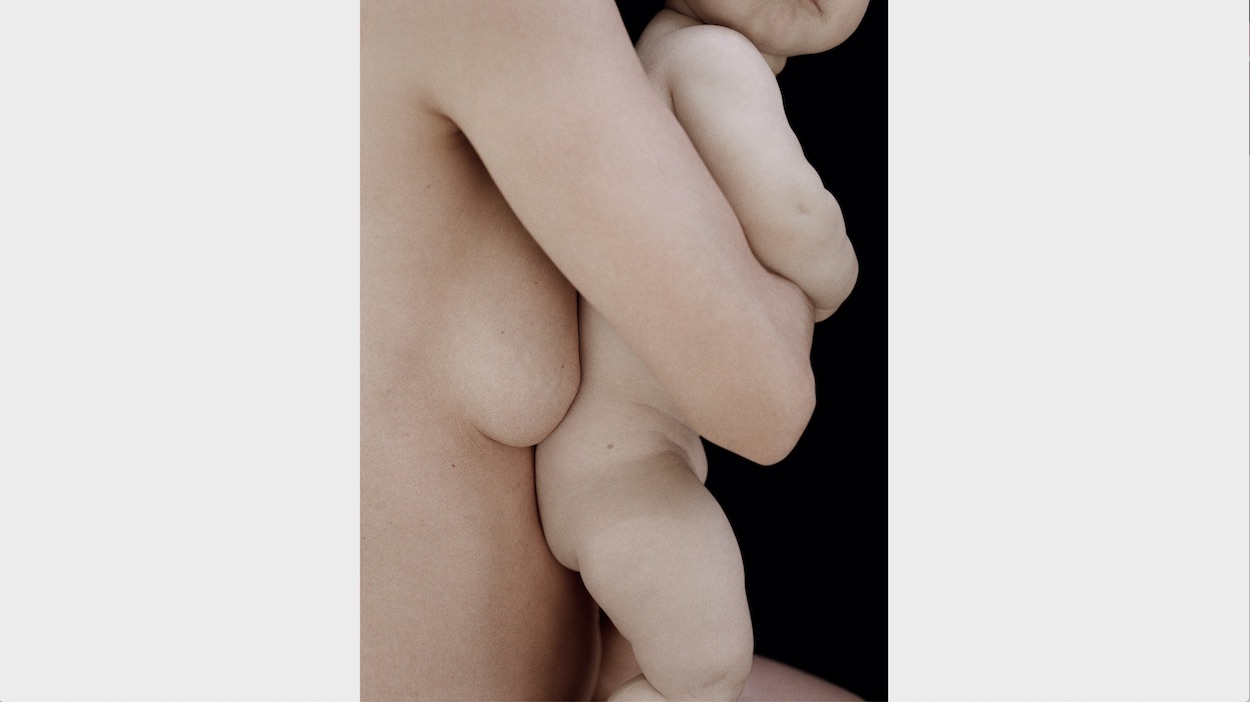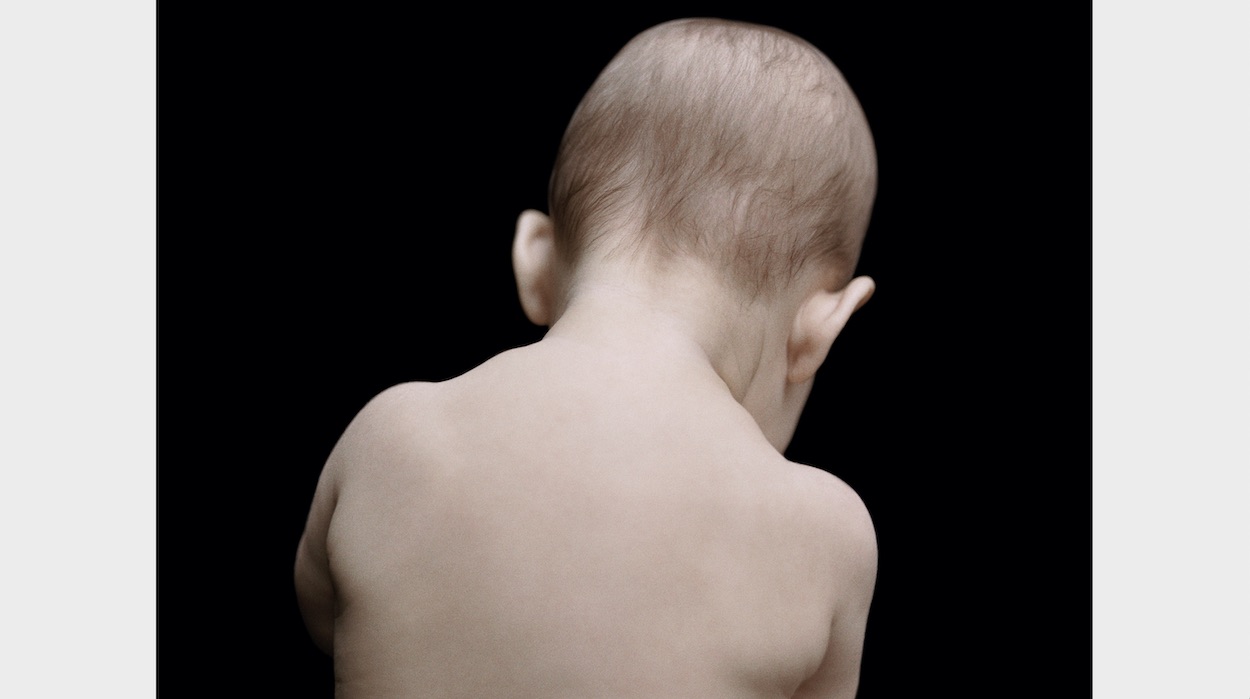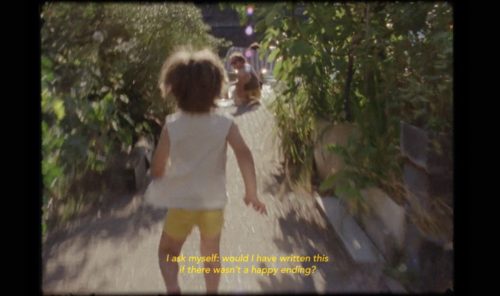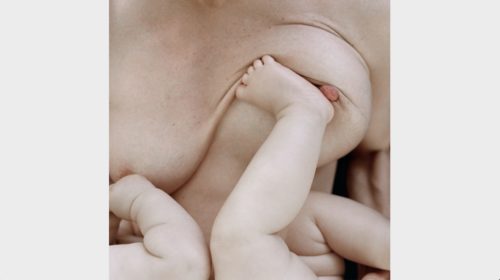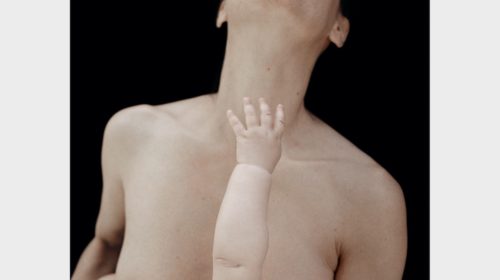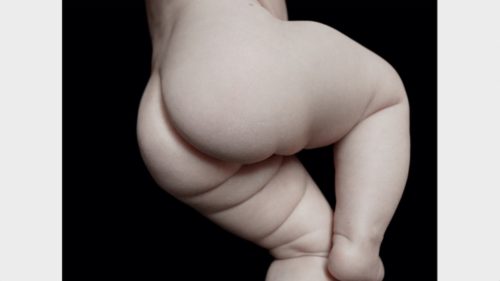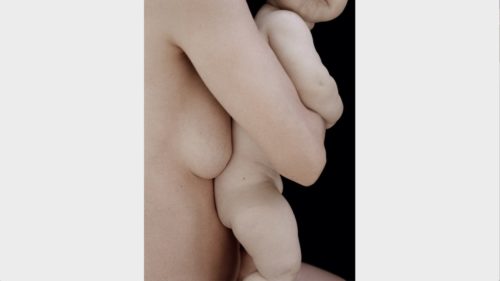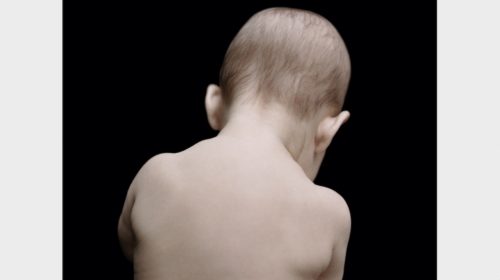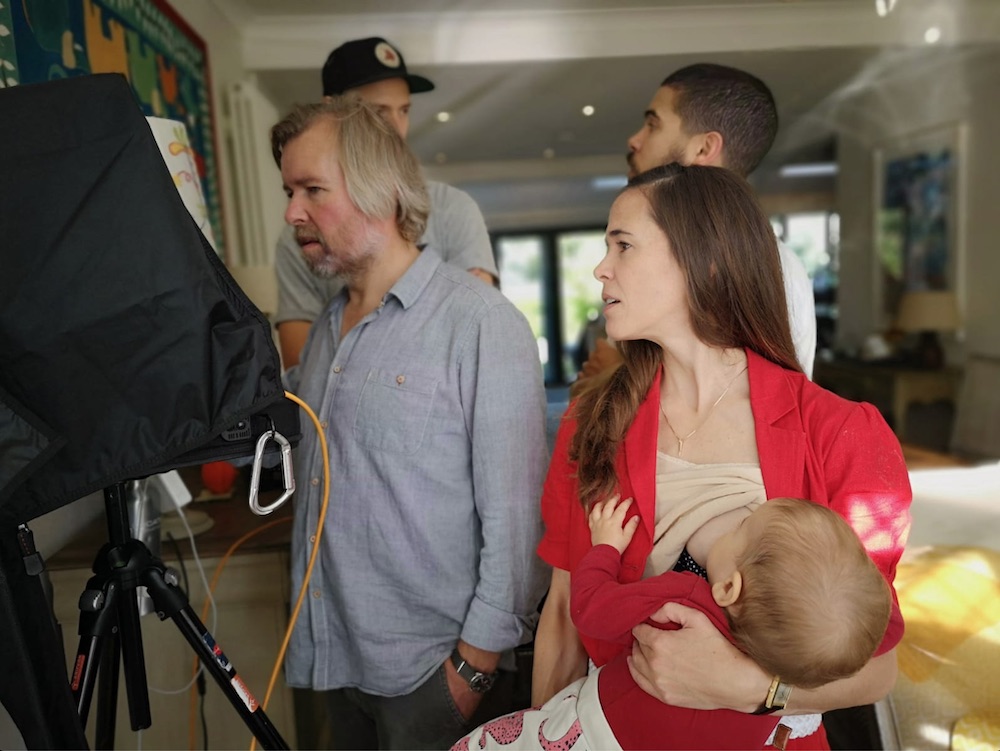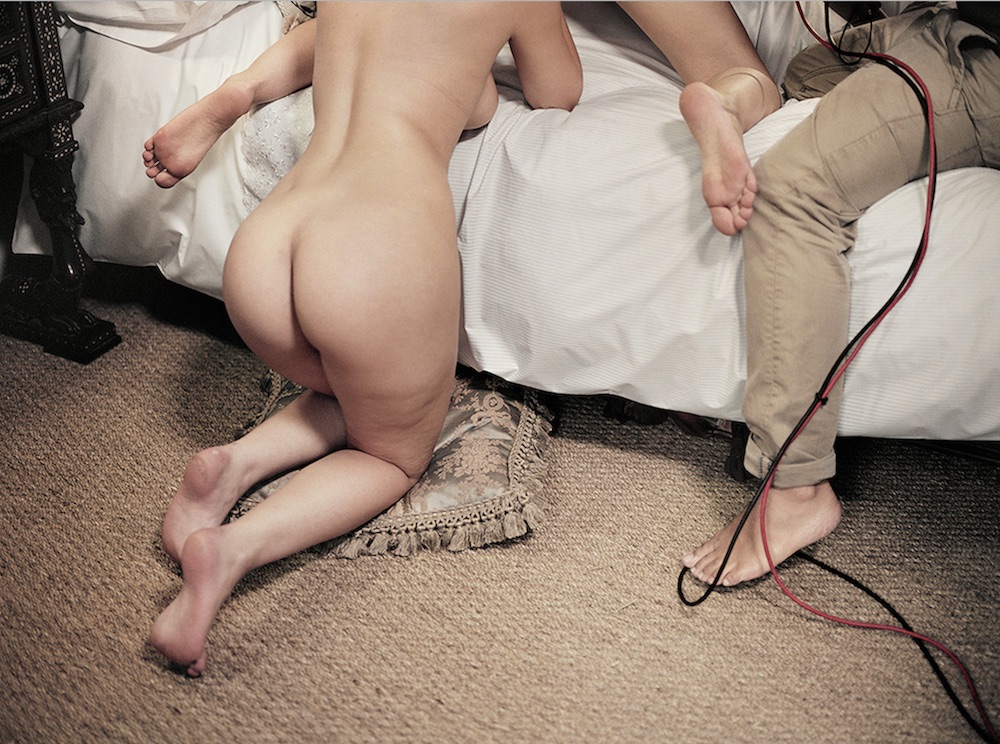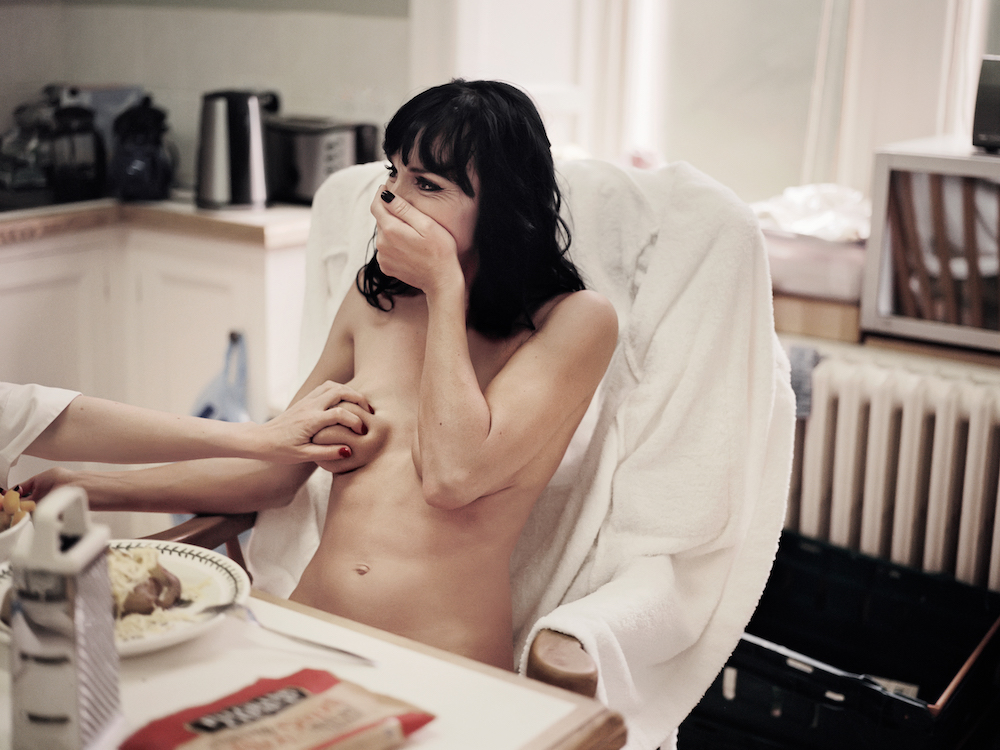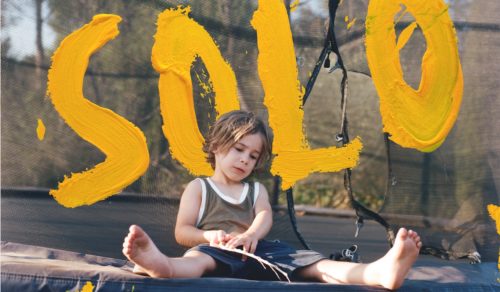You have a knack for stripping away our assumptions – with your first major photography exhibition you showed us the chic side of the porn industry and your latest show was titled “I don’t want to be a Mum” exploring the little-spoken about negative feelings of motherhood.
It’s true. It feels that I’m drawn to using more and more my voice. I’m not content anymore about just beauty, it has to have meaning.
In a recent piece for Creative Review, I wrote about being turned down for a job because I needed to breastfeed my daughter and questioned the creative industries’ commitment to true equality.
For one of my best known projects, It’s Just Love, I uncovered the beauty and mundanity in the everyday lives of porn stars. Shot with wit and tenderness, the images are set to challenge the preconceived ideas many have of the world’s most profitable industry.
And for I didn’t want to be a Mum, I addressed the realities of taking on an entirely new identity: becoming a mother.
Tell us about the exhibition. What made you create such a body of work?
I didn’t want to be a Mum is an exhibition that opened last September 2019 in Amsterdam, NL during the Unseen Photography festival.
Mixing pictures, moving image, sound and scent, I didn’t want to be a Mum was an immersive exhibition exploring the essence of motherhood.
In the exhibition, I spoke openly, in a raw and intimate diary, about the ambivalent emotions of motherhood.
When I became a mum, it was pretty much a slap in the face. I was three years into being a photographer, I loved my life the way it was. I didn’t want children to disrupt the path I was on. I was determined that motherhood would not own me. I fought against its uncool image. I had just been shooting a series of images on porn sets; how could I now push around a pram?
But motherhood is the myth of all myths, so you play the game. Carry on, as usual, wear the dungarees, hope for the best.
Right after the birth of my second child, I started to understand the conflicting emotions of motherhood. At first, it was really just about me wanting to analyse deeper what I had been going through. It was a sort of therapy. I wanted to get it out of my system.
Doing this body of work was, for me, a way to heal and to process and understand what had happened.
When a woman gives birth, society puts pressure on her saying it should be one of the most joyful moments of her life. The perception and reality of the day to day are so different it creates confusion, so women often struggle through this in isolation.
In a culture focused mostly on the baby, we need to normalise that becoming a mother is one of the biggest changes a woman will ever experience in her life.
Through this project, by being so honest and raw about my own feelings, I wanted to start a dialogue free of shame, guilt and judgment.
You’ve now directed a video boldly admitting your ambivalent emotions when you first became a mother. What was behind your decision to move from stills photography into film?
Mixed with pictures, moving image, sound and scent, I didn’t want to be a Mum was an immersive exhibition exploring the essence of motherhood. This film is meant to be the continuation of the exhibition.
For people who haven’t seen the show, it was hard to understand what it was about and the emotions that you would go through as a viewer discovering the show.
There were so many different elements, you had to experience it to really “get it”.
The responses to the show were overwhelmingly positive, so I tried to find a way to somehow continue the dialogue and the exhibition online. That’s when the idea of the video came up.
The film was co-directed by Ruben Peeters, a young director from Amsterdam (who also edited the piece). Having his perspective was important to me as I was too close to the subject when we started talking about turning the show into a film.
The biggest challenge was to find a way to capture the essence of the experience and compress it into a four-minute piece, without losing the core message and the emotion.
We wanted the camera to intuitively follow the path the viewer was making throughout the show. It had to feel like a continuous single take.
We shot it on 16mm with a Bolex (camera operated by Wouter Verheul).
I love shooting film. Unlike when shooting digital, there is less room for trying things and deciding later in the edit room as it would cost too much money. I love this process, it makes the entire crew more focused. It’s within this tension that magical moments happen.
What was the response you had from the show and what you are you hoping to get with this video.
I didn’t want to be a Mum was a sort of a therapy. It was very much a cathartic experience.
I didn’t think so many people would react the way they did to the show. I certainly didn’t expect the response I got from almost every single visitor.
Suddenly mothers, fathers, or even non parents seemed to get a weight off their shoulders; as if the exhibition was breaking barriers around a big taboo surrounding motherhood.
I realised that I am not the only one having such conflicting emotions. I hope that starting an honest dialogue, free from guilt or judgment, will benefit future mothers.
If women knew that most people found it hard, that the ambivalence was normal and nothing to be ashamed of, they would feel less alone.
With this video, I’m hoping to get a wider reach, for it to be shared to start a conversation. I would like the exhibition to travel in the US and in the UK. Hopefully this is only the beginning of a bigger journey.
Tell us about your background and how you became a photographer / director.
I started working as a photographer exactly 10 years ago. I had been working in advertising for a decade and I felt that I was not creatively fulfilled. After a burnout, I knew I needed to dramatically change something in my life.
That’s when I decided to pursue photography, which was, in fact, my childhood passion.
I can relate to this quote from Raymond Depardon: “I think photography was inside me. Once I found it, it became stronger than me and I took refuge in it”.
And then, quite naturally, I began exploring other media. Moving image came naturally as a different way to tell a visual story.
What are the key lessons you’ve learnt along the way and impacted on your style?
Because I never had formal training and didn’t go to art school, I began developing my own style quite early on.
I’m self-taught, and I never assisted; so I had very little technical knowledge when I started. At the beginning of my career, I had to listen to my own intuition, it was very much an instinct thing.
That’s how I quickly developed a body of work that is very me and that still feels relevant to me 10 years later. Over the years, things progressed quickly, as did my knowledge but I feel that the core essence of my work remains the same.
My background in advertising has proved unexpectedly useful in terms of growing my career, both in the opportunities it has thrown up (my first paid commission was for one of my ex employers Mother) as well as setting really high standards when it comes to the finished product.
Have you found filming to be the same creative process as shooting photography?
Going from stills to moving image felt very natural as there is some crossover. But the approach is totally different in terms of story-telling. There is so much more scope in moving image.
That’s the reason why we decided to create this film about the exhibition.
As a director, it feels quite daunting sometimes to go into moving image as photography is a much simpler process. With film, you have to rely on so many other people’s experiences and skills. It’s much more collaborative. You have to let go a bit more!
But ultimately, I find that whatever tool you use, it’s just a means to an end. One thing that never changes in my approach to film or photography is the emotion. It’s on the top of my list when shooting, whatever medium I use.
If you feel something when you press the shutter of your camera or when you cut a scene, then there is a good chance the viewer will feel the same too.
That is the most important thing for me, both for my commission work as well as for personal projects.
You’ve been attached to your stills camera since becoming a photographer, did you operate the video camera?
I have not yet operated the camera on bigger projects. I recently moved into a new studio and I want to push my creativity further in 2020 so I might get myself a Bolex and start shooting with it.
What is it that you’re seeking to express in your work?
Beauty! Rawness, reality, emotions, all with a cinematic feel.
But not just that. As I said earlier, I like to tackle subjects that are close to my heart, and question people’s opinion or find beauty in unexpected places (like I did with the It’s Just Love series).
How would you sum up your aesthetic?
My images are drenched with natural light, intimacy and beauty. Filled with movement and energy, each still contains a story, a personal tale. I invite the viewer to take a glimpse into worlds that are out-of-bounds.
In a culture that is obsessed with authenticity, my photographs are real and my shots are cinematic.
Commercial / personal work – does one influence the other?
One feeds the other. The two are symbiotic. I love shooting commission work. I get to work with bigger crews, bigger light settings than when I shoot personal work. Somehow, it also pushes me as I want to make great images, no matter what the brief is. I have fun in trying harder.
Commission work funds personal work. It gives me the financial independence I need to create long term personal projects. I like this balance.
Would you like to become a filmmaker commercially?
Even though 60% of the requests I get are for photography only, nowadays we get more and more requests for films as well as stills.
The last commercial I shot with CANADA and Iconoclast Paris for the Poulain chocolate brand is the best example. I was both the director and photographer.
Are your future plans for projects under wraps or can you share your ideas on the subjects you’d like to explore?
2019 has been a full-on year trying to find a way to help women come to terms with their feelings around motherhood and helping to raise debate around breastfeeding at work. It’s been pretty awesome to be part of something bigger, to feel that I am part of a change. And to help women.
For 2020 I have many ideas that I want to shoot. I’m currently busy with editing a book with images I shot in a township in South Africa about men stick fighting. So quite diametrically opposite to the work I’ve done around women this year. But it’s the amazing thing about my profession. I can decide to enter worlds I know nothing about, be a chameleon, an observer, and then make beauty out of it, always beauty.

